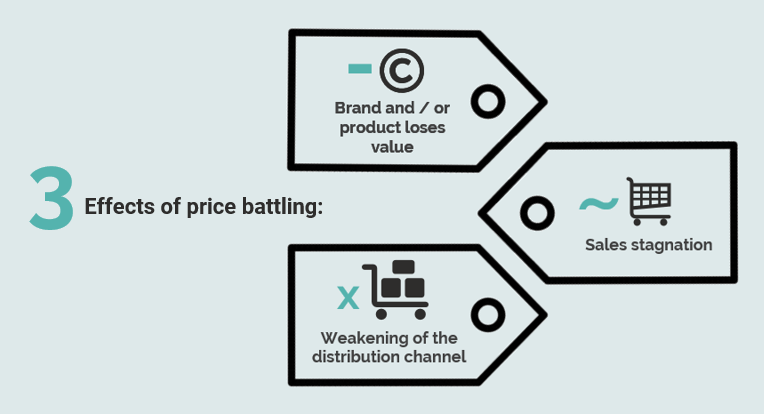Offering an optimal Customer Experience in eCommerce world, is not easy for multi-channel brands. To constantly monitor all eCommerce touch points and view thousands of product detail pages manually, is an impossible job.
In this article we give you 5 ways how to improve the customer experience.
Do you want to find market opportunities for new products in order to keep your customers interest? Or if you are already selling a product, find out who your direct competitors are to differentiate and stay ahead? Monitor competitors within a certain online product category that you are active in (or might want to get active in future).
In order to deliver a great customer experience you have to differentiate from and stay ahead of competitors. The following metrics can be useful to monitor:
There could be a variety of reasons to return a product, such as a mismatch between expectations and reality, late delivery, damaged product, or even because the customer found a cheaper alternative elsewhere. Did you know that 22% of online returns are due to the product being substantially different in appearance than was advertised online? This is definitelynot conducive to your customer experience.
Prevention is better than cure! In order to prevent product returns the following metrics can be useful to monitor:
Do you want to reduce product returns?

You might use a PIM system to centralize all your products' content at one place, but this doesn't assure that product content is shown correct and complete at your resellers product detail pages.
Complete and correct product content:
In order to take control of product content on all indirect sales channels, the following metrics are useful to monitor:
You can find more detailed info about the Digital Content Completeness score (DCC score) here.
Signify (formerly Philips Lighting) has set up a targeted review campaign using SiteLucent software. Download info-graphic.
Since no one can buy your products if they can’t find them or if they are not available, it is important to keep your brands' presence consistent on all indirect sales channels to keep customer experience positive.
In order to improve your products' and brands' visibility, the following metrics are useful to monitor:
For your products to be found online it is not enough to only choose the right keywords and place them in a smart way. Each marketplace and eCommerce platform has its own search algorithm which ponders many factors such as product availability, reviews, rich content and how well your product content matches a search intent. Getting a position in the top of (eCommerce) search engine results is a game consisting of many factors.
The efforts you set forth monitoring your products and acting on it the right way, can improve your search results significantly.

Building and preserving a fair and transparent relationship with channel partners will indirectly improve customer experience. This is because you are all working towards the same goal: making and keeping the customer happy!
As a manufacturer or brand, it is tough to find a balance between own eCommerce stores and wholesalers and retailers and to avoid channel conflicts. Your products are likely sold across a wide variety of channels—not all authorized or part of a formal distribution channel (grey market).
Online Shelf Monitoring can help your team save hours of time looking through eCommerce sites to see who is reselling your products, if they are authorized vendors.
By moving from guesswork towards data-driven conclusions and improvements, you can create joined effort to keep growing together with your resellers and partners, continuously. This makes cooperation with partners more pleasant and increases return on investments for both sides. A pure win-win situation!

+31-4-02065510
info@sitelucent.com
© 2021 - SiteLucent | Privacy policy | Terms of use